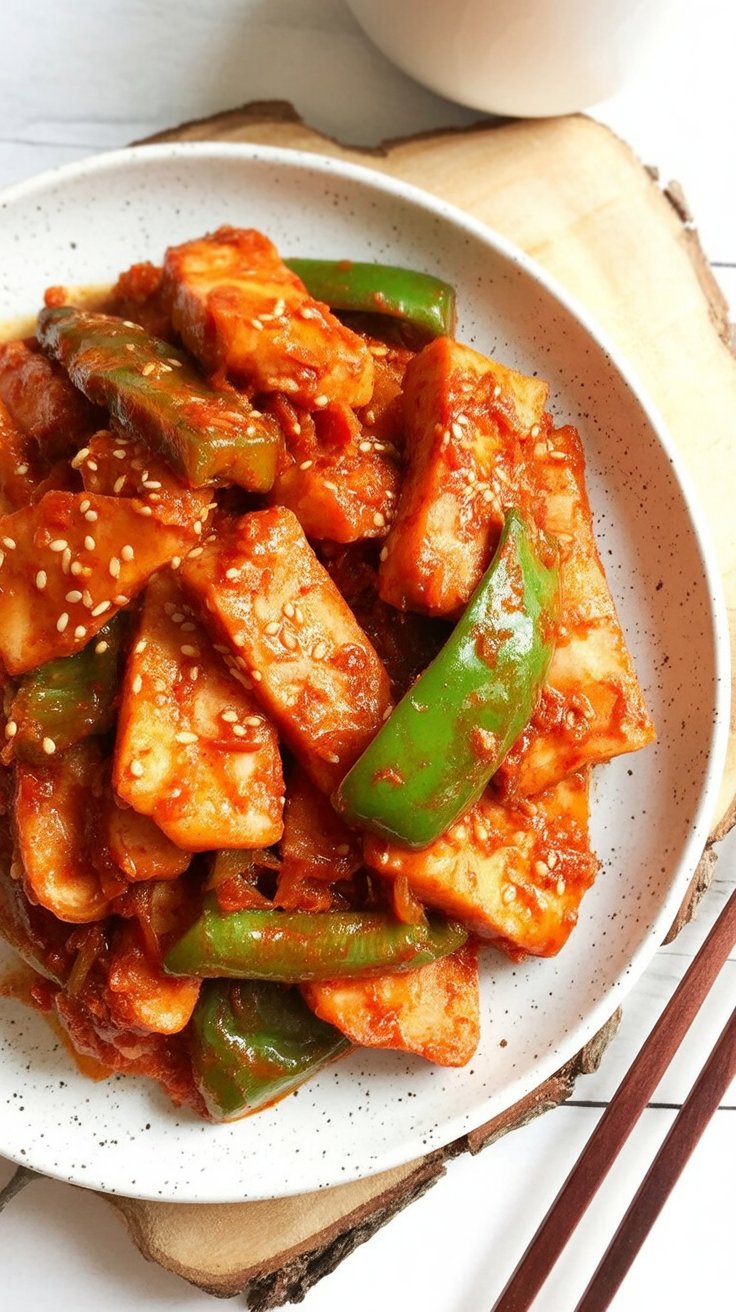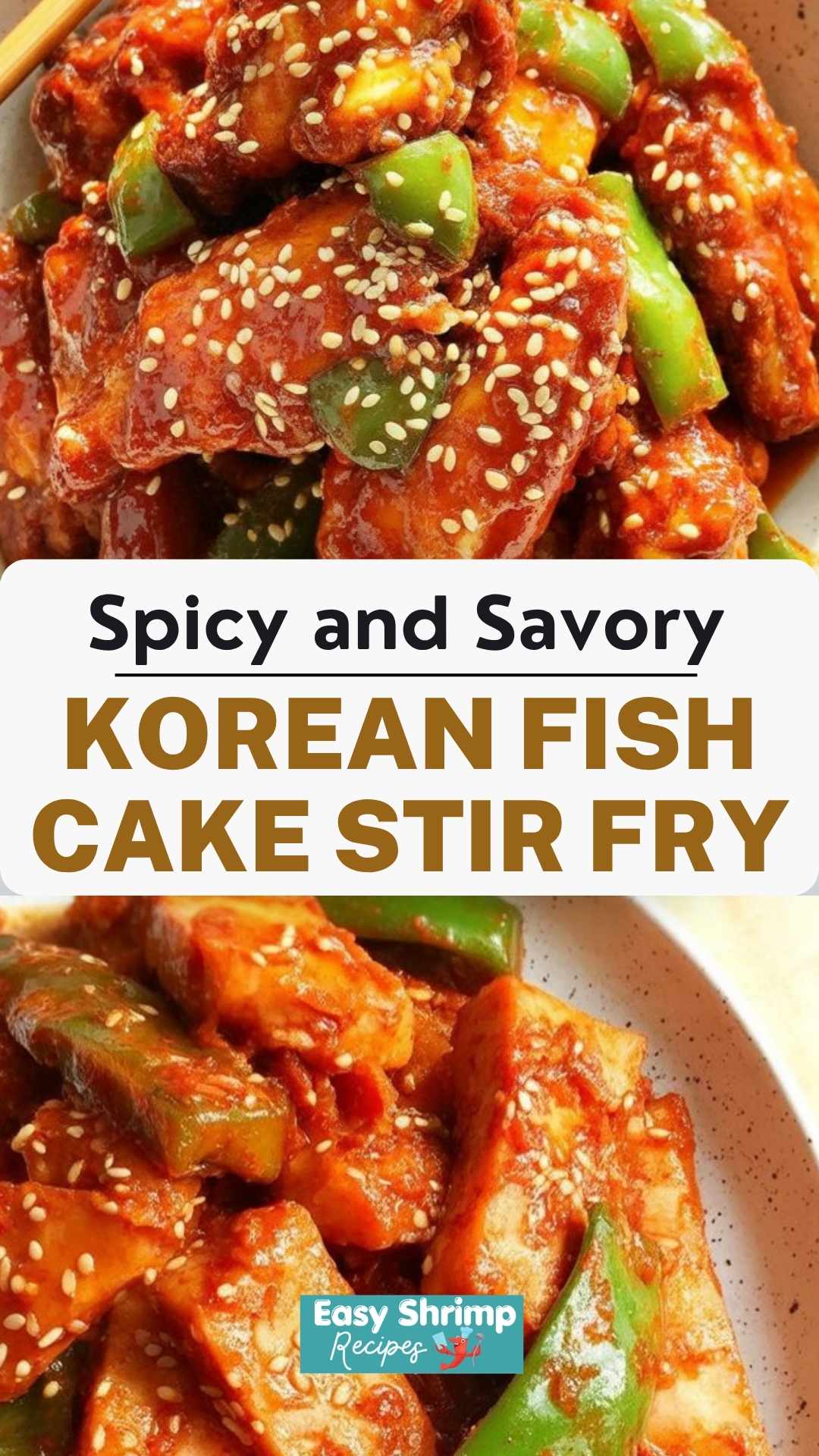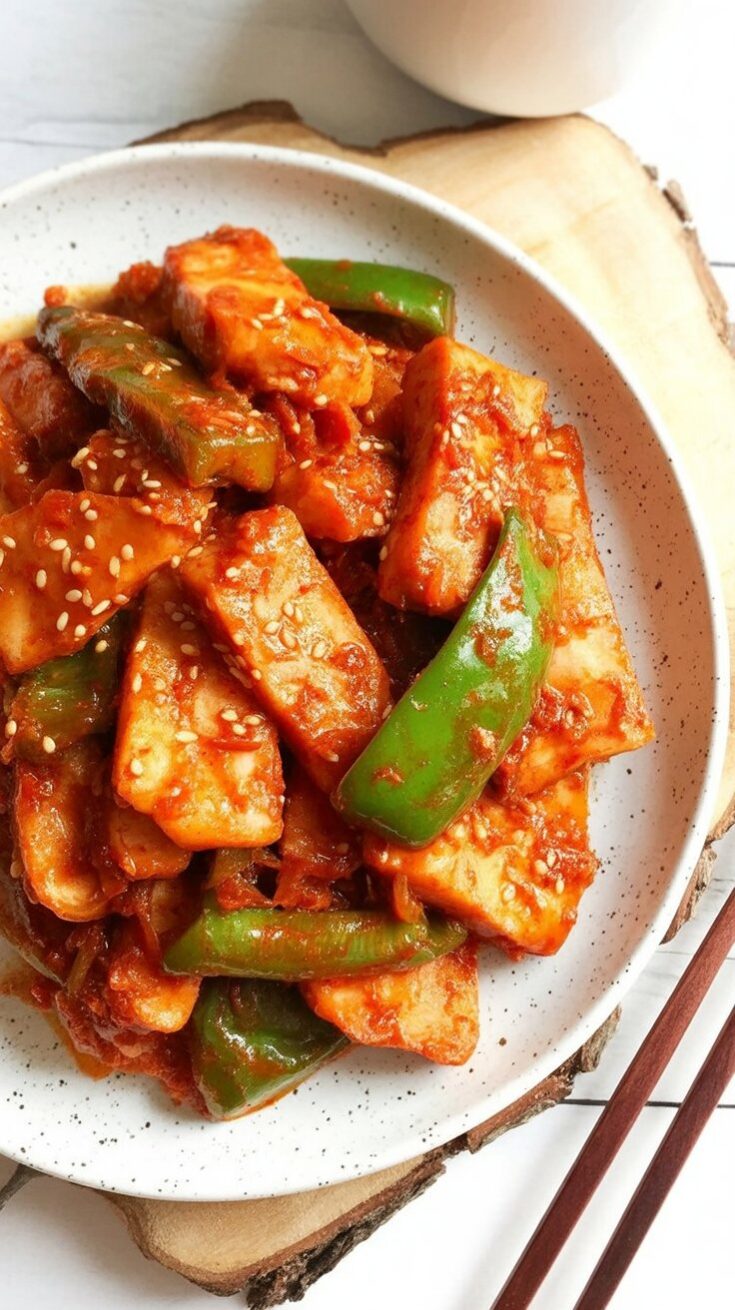If you’ve ever wandered through a Korean street market and caught a whiff of something spicy, sweet, and savory all at once—that’s probably eomuk bokkeum calling your name. This stir-fried fish cake dish is a staple in Korean homes and lunchboxes, and honestly, it’s dangerously easy to polish off the whole plate before dinner even starts. It’s one of those dishes I end up snacking on straight from the pan while “tasting.”

Let’s just say—get your rice ready. You’ll need it.
Why I Always Keep Eomuk in My Freezer
Eomuk bokkeum is one of those banchan (Korean side dishes) that never sticks around long in my fridge. The spicy version, especially, is my favorite because it reminds me of the heat and bold flavors in dishes like spicy tteokbokki—but it takes way less effort to make. That’s a win in my book on any busy weeknight.
Fish cakes are incredibly versatile. Some days, I toss them into a quick soup, other days they get the stir-fry treatment like this. They’re budget-friendly and freezer-friendly, so I always keep a stash of the flat rectangular ones on hand.
What Exactly Is Eomuk?
Eomuk is the Korean word for fish cake, made from a blend of white fish, starch, and sometimes vegetables, all ground into a paste and steamed or fried. It’s surprisingly light and bouncy in texture—almost like a cross between tofu and sausage, if that makes sense.
Now, I did once try making eomuk from scratch… and let’s just say I gained a whole new level of respect for the folks who do that regularly. It’s a bit of a project! For everyday cooking, store-bought eomuk is absolutely the way to go.
Types of Fish Cake You Can Use
If you’ve never stood in front of the fish cake freezer section at an Asian market overwhelmed by the shapes and sizes—welcome to the club. Some look like meatballs, some are stuffed with octopus, and others come shaped like logs, cubes, or thin rectangles.
For this recipe, stick with the thin rectangular ones. They’re about the size of your palm, tan in color, and super flexible—perfect for slicing and stir-frying. You’ll find them in the freezer or refrigerated section, and they last ages once frozen.
How Does Eomuk Taste?
It’s savory, slightly sweet, and just a little briny—but not fishy at all. Think of it like a mild seafood sausage. It absorbs sauces beautifully, which is why it works so well with this spicy glaze. If you’re sensitive to seafood smells, you can blanch them quickly in hot water before stir-frying, but I personally skip that step unless the brand smells overly strong.
The Difference Between Eomuk and Odeng
They’re the same thing. “Odeng” is a borrowed word from Japanese “oden,” while “eomuk” is the proper Korean term. You’ll hear both used, especially in casual settings. In fact, I heard “odeng” so much growing up that I didn’t realize “eomuk” was the same thing until I started cooking Korean recipes more seriously.
You’ll also find odeng skewers simmering in broth at street stalls, served next to bubbling pots of tteokbokki—now that’s a late-night combo I miss dearly.
Why Blanch Eomuk Before Cooking?
It’s optional, but a quick dip in hot water (no more than 30 seconds) helps remove excess oil and mellow out the fish cake flavor a bit. Some folks swear by this step, but honestly, I like the full flavor of eomuk as-is—so unless the packaging feels greasy or the smell is too strong, I skip it.
Can You Eat Eomuk Cold?
Technically yes, since it’s already cooked. But would I recommend it? Not really. Heating it up brings out its texture and softens the edges so it absorbs sauce better. Once stir-fried, it turns chewy in the best way.

How Long Can You Store This Stir-Fry?
Spicy eomuk bokkeum holds up well in the fridge for about 3–4 days. I usually make a big batch on Sunday and it stays perfect for packed lunches or a quick side throughout the week. If it turns mushy, though, it’s time to toss it.

What to Serve with Eomuk Bokkeum
This is a side dish, but it easily becomes the main event when I’m too lazy to make anything else. I’ll scoop it over hot steamed rice, maybe fry up a sunny-side egg, and dinner’s done.
If you’re building a full Korean spread, serve it with:
-
Kimchi
-
Japchae (glass noodles)
-
Soy-marinated eggs
-
Grilled bulgogi
-
Sesame spinach or bean sprout salad
It also fits beautifully in lunchboxes or dosirak. In fact, whenever I pack this for friends, they ask for extra—especially when it’s the spicy version.
Korean Fish Cake Stir Fry

If you're craving something quick, bold, and packed with Korean street food flavors, this spicy fish cake stir-fry is a total hit.
Ingredients
- 6 sheets Korean frozen fish cakes (eomuk or odeng), thawed
- ⅓ medium carrot, julienned
- ½ medium onion, thinly sliced
- 1 green Korean chili pepper, sliced
- 3 tablespoons chopped scallions
- 2–3 tablespoons olive oil
- 3 tablespoons water (for cooking)
For the Sauce
- ½ to 1 tablespoon gochujang (Korean chili paste), adjust to heat preference
- 1 tablespoon gochugaru (Korean red chili flakes)
- 1 tablespoon Korean soy sauce
- 1 tablespoon mirin
- 1½ tablespoons corn syrup (or honey)
- 1 tablespoon minced garlic
- 1 teaspoon sugar
- ½ tablespoon sesame oil
- Pinch of black pepper
Instructions
- Start by soaking the thawed fish cake sheets in freshly boiled water for about 30 seconds to remove any oily coating. Drain and let them cool slightly, then cut into bite-sized triangles.
- Get your veggies prepped — slice the onion, julienne the carrot, and cut the green chili. Set everything aside on a tray so it’s ready to toss into the pan.
- Whisk together the sauce ingredients in a small bowl. Keep a separate bowl of water (3 tablespoons) ready to add later during cooking.
- Heat a non-stick skillet over medium-high and drizzle in the olive oil. Add the fish cake pieces, sliced onion, carrot, and chili pepper. Stir-fry for around 3–4 minutes until everything softens and the fish cakes start to brown.
- Pour the spicy sauce over the stir-fry and give it a good toss so everything gets coated. Let it sizzle for about a minute. Add in the water to help the sauce cling to the ingredients and cook for another minute. Turn off the heat.
- Finish with a sprinkle of sesame seeds if you’d like — and serve hot, right alongside a bowl of rice.
Nutrition Information
Yield
3Serving Size
1Amount Per Serving Calories 1084Total Fat 109gSaturated Fat 15gTrans Fat 0gUnsaturated Fat 91gCholesterol 22mgSodium 686mgCarbohydrates 25gFiber 1gSugar 17gProtein 6g
Easy Shrimp Recipes.com, occasionally offers nutritional information for recipes contained on this site. This information is provided as a courtesy and is an estimate only. This information comes from online calculators. Although allchickenrecipes.com attempts to provide accurate nutritional information, these figures are only estimates.
Final Thoughts
Eomuk bokkeum might not look like much at first glance, but once that spicy-sweet glaze hits the pan and clings to those fish cakes, it becomes something truly addictive. Whether you’re new to Korean cooking or just need something quick, this one’s worth trying. Keep a pack of eomuk in your freezer and you’ll always have a backup plan for a satisfying meal.

